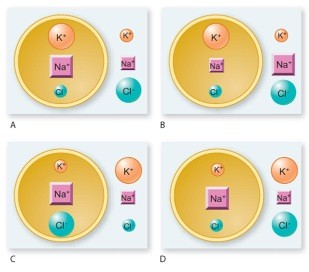The amniotic egg evolved as an adaptation
A. against predation.
B. to insure survival in the uterus.
C. to prevent desiccation.
D. to permit the embryo to develop undisturbed up to the time of hatching.
C. to prevent desiccation.
You might also like to view...
Reversible reactions in a cell rarely reach equilibrium because
a. the products are generally reactants in other reactions and are thus immediately used. b. a cell at equilibrium is dead. c. most reactions in a cell are not reversible, allowing the cell to devote additional resources to regulating the few reversible reactions that do occur. d. cells have no way of measuring the relative ratios of reactants and products. e. conditions in the cell change too rapidly for any reaction to ever reach equilibrium.
A (n) _____ is an autotroph
a. primary producer c. detritivore b. herbivore d. top carnivore
Glycolysis yields a net energy profit of __________ ATP molecules per molecule of glucose
a. 0 b. 1 c. 2 d. 4 e. 6
Which diagram correctly illustrates the distribution of ions in a resting neuron? (Note: A larger symbol indicates a higher concentration of that ion.) 
A. A B. B C. C D. D